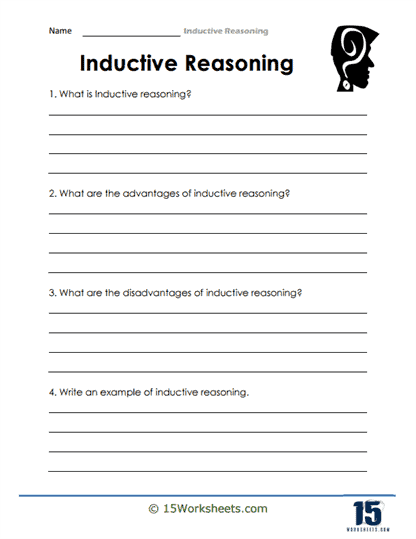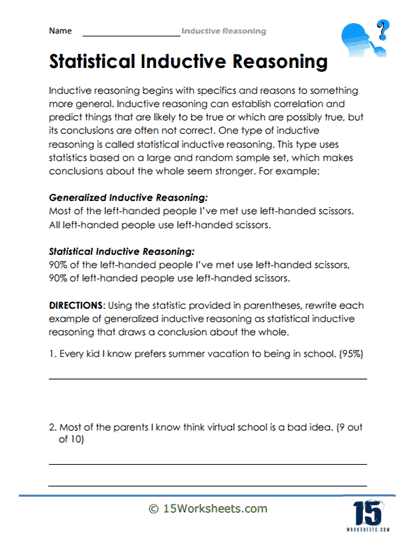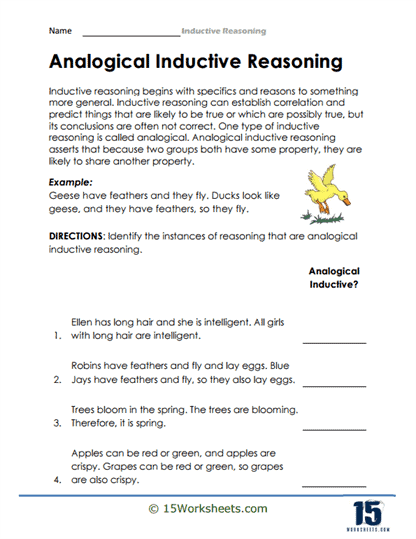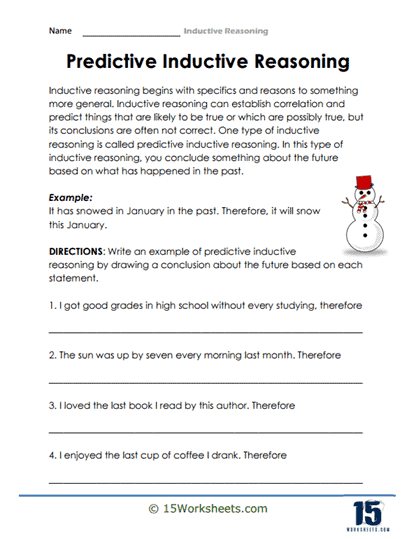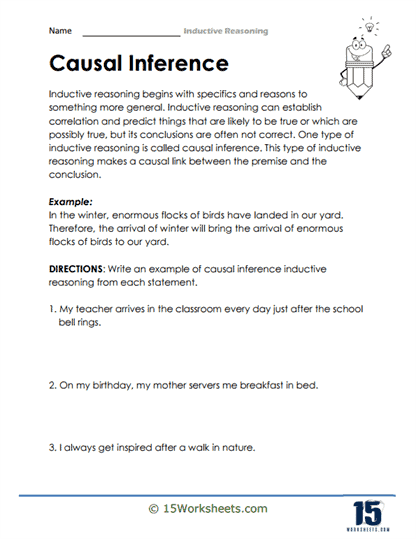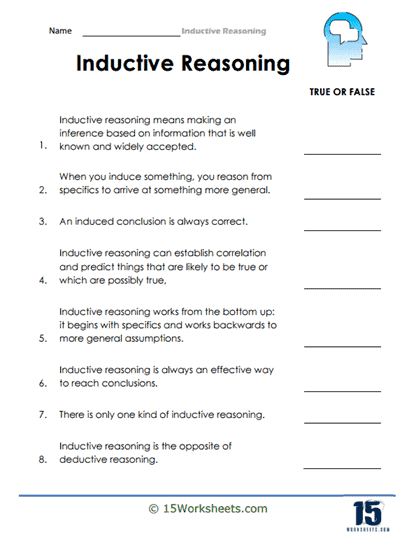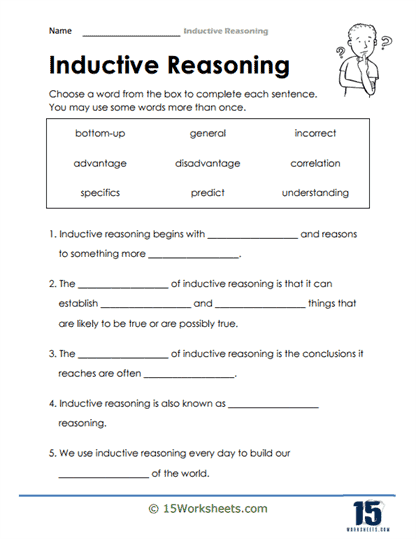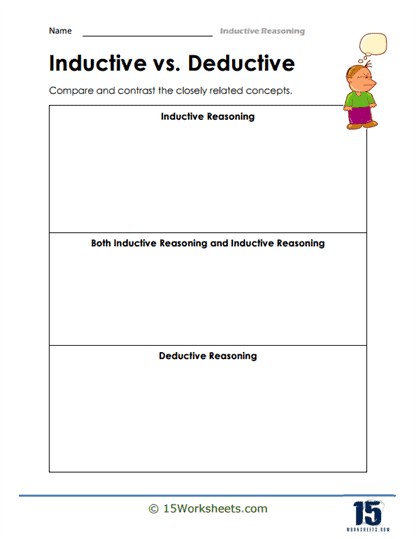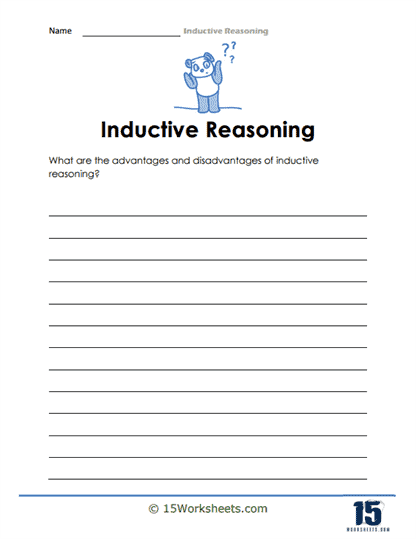Inductive Reasoning Worksheets
All About These 15 Worksheets
In the realm of critical thinking and problem-solving, inductive reasoning stands as a stalwart pillar. As students embark on their educational journey, cultivating the ability to reason inductively is akin to acquiring a versatile cognitive toolset.
This collection of 15 student worksheets on Inductive Reasoning presents an invaluable opportunity for learners to delve into the intricacies of this powerful mental process.
Through these meticulously crafted worksheets, students will not only grasp the fundamental concepts of inductive reasoning but also apply them to real-world scenarios, nurturing skills that are indispensable for both academic success and life beyond the classroom.
What is Inductive Reasoning?
Inductive reasoning can seem intimidating if you’ve never been formally introduced to it, but it’s really a fairly simple concept once you get the hang of it. Most people can instinctively understand inductive reasoning and can use it in their daily lives, even if they don’t realize they’re doing so.
Inductive reasoning is a crucial tool in logic and critical thinking. It allows people to jump to conclusions and make assumptions based on the information they already have access to.
At its core, inductive reasoning is about using observation or data to form a hypothesis about something. With inductive reasoning, there’s no such starting point; instead, one starts by looking at a bunch of observations or experiences and uses those as a basis for making guesses (conclusions).
Common Mistakes Inductive Reasoners Make
Many people think that inductive reasoning is the process of making generalizations based on specific observations. However, there is more to it than that. In order for an induction to be valid, the premises must be true, and the premises must logically entail the conclusion.
Unfortunately, many people make mistakes when using inductive reasoning. Here are some of the most common mistakes:
– Assuming that the premises are always true: Just because the premises are true in some cases does not mean that they are always true. For example, let’s say you observe that all of the spoons in your house are made of metal. You might conclude from this that all spoons are made of metal. However, this would be a fallacy because there are other materials from which spoons can be made (e.g., plastic).
– Assuming that the conclusion is always true: Just because the conclusion is true in some cases does not mean it is always true. For example, let’s say you observe that all the dogs in your neighborhood are friendly. You might conclude from this that all dogs are friendly. However, this would be a fallacy because there are other neighborhoods where dogs might not be so friendly.
How to Be Good at Inductive Reasoning?
Good inductive reasoners are able to identify patterns in situations and make educated guesses based on those patterns. When confronted with new situations, they compare what they see to what they already know, then adjust based on those comparisons. If something doesn’t match up exactly, they won’t be thrown off; instead, they will draw conclusions about how similar or different these two things are and adjust accordingly.
In short, to be good at inductive reasoning, try to adapt well to new situations while remaining confident in yourself and your conclusions.
Tips for Using Inductive Reasoning in Your Writing
Inductive reasoning is a process of making conclusions based on observations. While it can be challenging to master, some tips can help you write more effectively.
– Make sure your premises are accurate: The whole point of inductive reasoning is to make sound inferences based on evidence. If your premises are inaccurate, then your argument will fall apart. So, do your research and ensure you have your facts straight before you start writing.
– Use specific examples: Inductive reasoning is all about drawing general conclusions from specific evidence. To do this effectively, you must use concrete examples to illustrate your point. Vague references or hypothetical scenarios won’t be persuasive to your reader.
– Be clear and concise: Inductive reasoning can be complex, but that doesn’t mean your essay has to be long-winded or hard to follow. Be clear and concise in your writing, and explain your reasoning step-by-step so your reader can follow along easily.
Final Thoughts
The brain is an amazing organ that can be trained to think in new and innovative ways. By using inductive reasoning, you can tap into the power of your brain to come up with new solutions to problems and challenges. We’ve shown you how inductive reasoning works and some ways you can use it in your own life. It is time for you to show us what you will do with this powerful tool!





